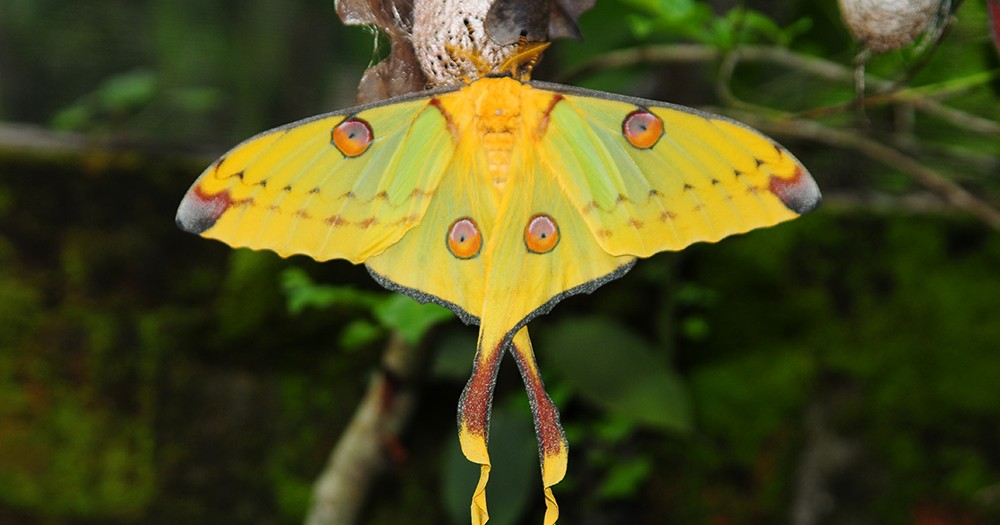Moth Facts
Moths are insects in the order Lepidoptera, the same as butterflies. There are approximately 160,000 moths globally, far outnumbering the number of butterflies, around 17,500. They are winged, nocturnal insects that go through four stages throughout their lifetime – egg, larva, pupa, and adult.
The wings are covered with scales and are a bit drabber compared to butterflies. They tend to hold their wings in a tent shape.
Some moths have big circular spots on their hindwings resembling eyes commonly referred to as eye spots. These big, patterned eyespots often serve as a defense mechanism helping them ward off predators. The Polyphemus and Io moths are notable for their unique eyespots.
The head of the moth contains a set of two compound eyes, two antennae, two palpi, and in certain species, a proboscis.
The antennae of the moth are feathery or saw-shaped. Moths use them for smelling and navigational purposes.
Adult moths have both simple and compound eyes allowing for excellent vision. However, they have next to no visual capabilities in the larval stage.
The lifespan of an adult moth varies, with most living for a few days or a week. However, some live longer for several months or even a year. The rosy maple moth can live for 2-9 months.
Not all moths have mouthparts, surviving on the energy stored in the pupal stage. Some have a proboscis for sucking nectar.
Like other insects, a moth has six legs in both the larval and adult stages.
Yes, some like the whitelined sphinx moth have been spotted in the late afternoon or dusk.
Caterpillars feed on plant material and natural fibers, while some adults drink nectar and tree sap.
Moths vary in size, ranging from the little long-horn moth with 0.8-1.1cm to the Hercules moth with a wingspan over 27 cm.
Moths have several predators, including bats, birds, insects, mammals, and reptiles.
Yes, moths sleep during the day.
Moths can be found in every form of habitat, from forests to mountains to deserts. For instance, hummingbird moths can be spotted in the hills, while white-lined sphinx moths live in deserts.
Moths are attracted to light for several reasons, such as being confused and disoriented by light.
Moths have various ways of camouflaging themselves, including distinct colors and patterns on their wings.
Moths have several purposes, as an essential food source, as pollinators, and as an indicator of environmental issues.
No, moths pose no significant threat to humans.
They are small and rounded at the end, with colors varying among the species. For example, the eggs of the rusty tussock moth are yellowish-brown, while the autumn gum moth has very green eggs.
Larvae have several deterrents against predators, including urticating hair, bitter taste, and camouflage.
Despite both belonging to the same order, there are several differences between a butterfly and a moth:
a) Butterflies are diurnal, while moths are nocturnal.
b) When at rest, butterflies fold their wings while moths spread them in a tent shape.
c) The moths spin silky cocoons during the pupal stage, while butterflies have a shiny, hard chrysalis.
Most larvae have a head capsule and a segmented body and go through several instars that may differ significantly depending on the species.
Yes, those moths that feed do so via their proboscis, which can only consume liquids.
No, moths cannot survive freezing temperatures.
No, moths are not blind. Their vision is better than most animals, thanks to the two sets of eyes.

